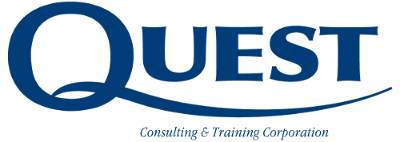Fortune 100 companies are banking on new products / services / markets for new revenues and enhanced profitability. Growth and business efficiencies result from this creation of these new offerings, and the call for increased profits is almost deafening.
To accomplish this, “Projects” are undertaken. These are temporary endeavors to create new, unique products / services or business processes. The number of projects being undertaken in corporate America is increasing at a geometric rate.
However, the world of project work is fraught with danger. Based on studies completed by the Conference Board and others reported in Robert Cooper’s book “Winning at New Products”, 46 percent of the resources firms spend on the conception, development and launch of new products are spent on products that either fail commercially or never make it to market.
A number of problems, common to and inherent in project work, account for this high failure rate. Let’s consider several to help us identify areas where project processes or discipline can be improved.
A sustainable competitive advantage requires implementation of change.
Peter Walker of McKinsey and Company said: “Change in the marketplace has refocused companies on how to maintain sustainable competitive advantage. The focus that is emerging is that developing creative strategies is not enough. The organizations that thrive will be those that can execute those strategies.” The hierarchical or traditional organization was created to produce goods and services using repetitive processes, and is not well suited to rapid change. The need for creativity and innovation is limited to process improvement, so project leaders must be able to effectively drive change.
Projects require risk tolerance. The hierarchical organization exists to preserve and protect existing technology. It has numerous checks and balances and certain redundancies to ensure stability and predictability. By definition this “command and control function” abhors the risk associated with creativity and innovation, integral to project work. Risk is avoided by using established processes that are incrementally improved over time. Projects on the other hand require new, innovative, creative thinking, fraught with risk. Project leaders must be able to reward and encourage risk taking by team members while, at the same time, dealing with the predictable risk aversion of management and project stakeholders.
Projects require true teams. Teams and teamwork have received much attention in most successful organizations, but true teams are still scarce commodities. Work-groups are commonly mistaken for teams. A work-group is a compilation of individuals to whom work is given. In work-groups the work is broken into batches of tasks that are similar in function, then assigned to an individual from that function for completion.
Individual contributors complete tasks and the results are conglomerated or compiled. The output is equal to the sum of the input. Creativity is minimized because existing paradigms are not challenged. Harmony is encouraged, rather than the discord traditionally associated with innovation and true teams.
True teams are different from work-groups. They include a variety of skills, ideas and perspectives. Teams share responsibility for ownership of the mission and for task completion by participate in designing / defining “how” the project will be completed. Team members solve problems by creating new options and implementing associated change. Project leaders must be able to create ownership, encourage expression of diverse ideas, force conflicting ideas to merge into new options, encourage consensus, create an atmosphere where team members can find motivation and establish, then maintain, trust.
When you identify the elements necessary for project success and then identify what leads to success in a production environment, it becomes obvious that they are at opposite ends of the spectrum and it becomes easier to see why project work suffers such a high failure rate. What is the solution?
Project Leaders must do more than manage time-lines, budgets and project resources (habits they carry forward from the hierarchical organization). They must build, motivate, lead, sustain and reward teams. They must effectively communicate with a diverse group of stakeholders across multiple functions with unique interests regarding the project. They must manage varying expectations to create satisfaction of all stakeholders. They must protect and defend their project interests while simultaneously protecting interests of the hierarchical organization from which they draw all resources.
The interpersonal skills, e.g., communication, negotiation, and conflict resolution, necessary for success are not common among project leaders. This is because they are traditionally promoted from analytical disciplines like engineering, R&D and production. Thus, we must train them in these critical skills. And this training must be accomplished in a project environment so specific skill applications can be understood and realistic consequences experienced. The task is monumental, but the rewards are quickly observable, at the bottom-line!
